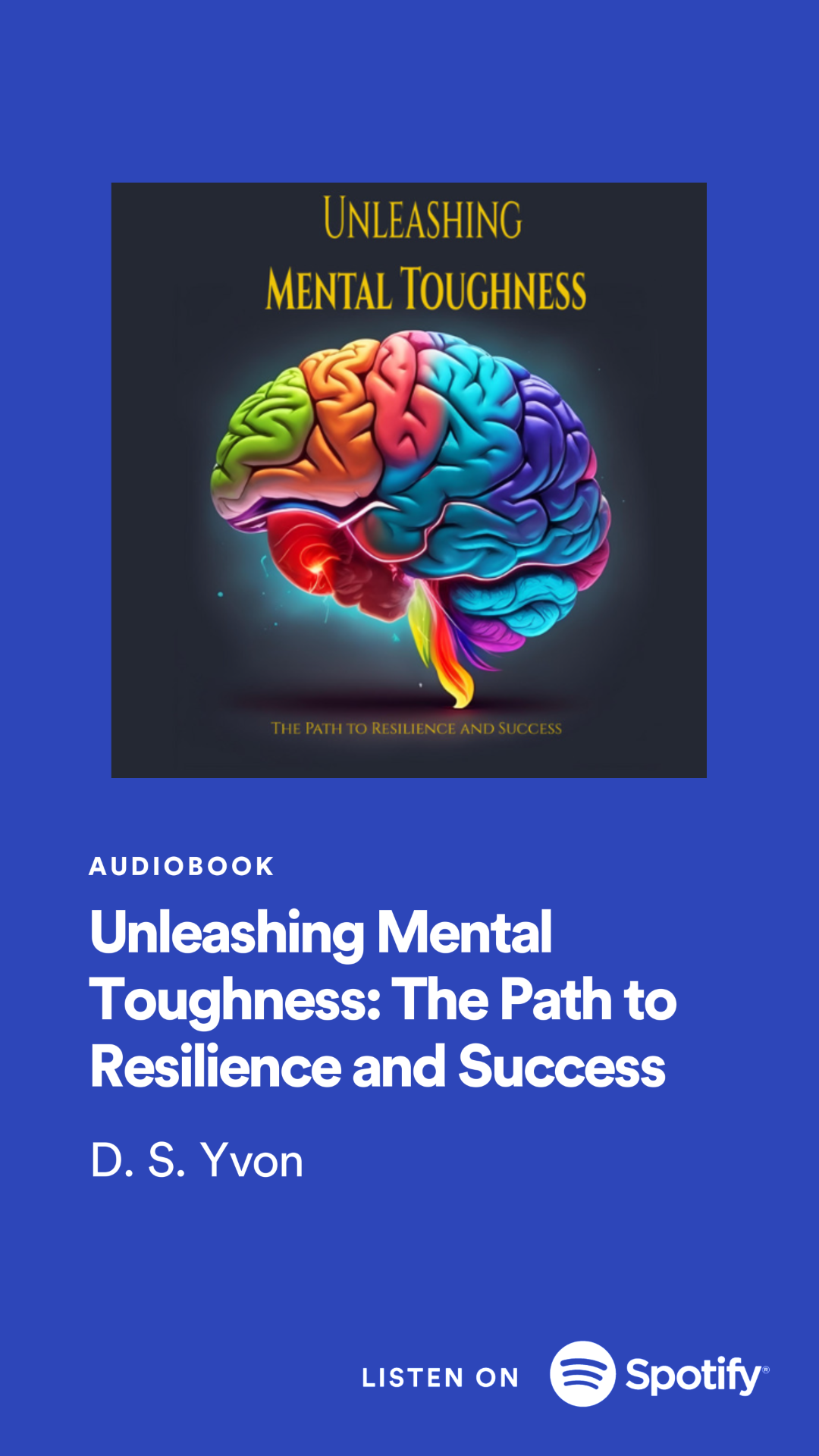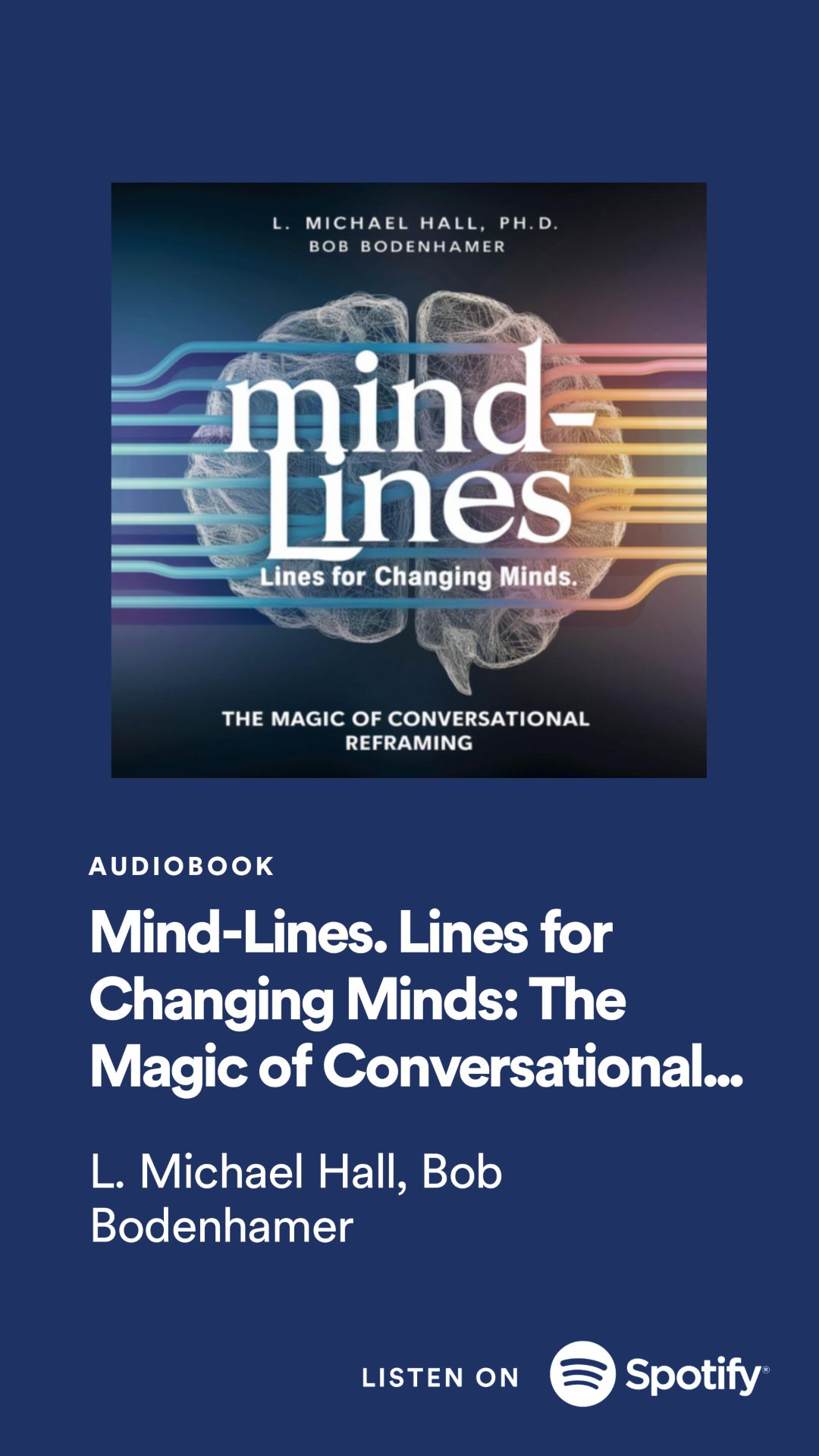


Top 22 Best Audiobooks Focused on Mental Health and Self-improvement
1. The 7 Habits of Highly Effective People by Stephen R. Covey
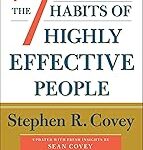 A foundational self-help book that outlines seven key principles for personal and professional effectiveness. The habits are designed to foster personal growth, enhance interpersonal relationships, and encourage proactive behavior, emphasizing the importance of character and integrity over superficial personality traits. Since its publication in 1989, the book has inspired millions, providing a timeless framework for achieving meaningful change and success in various aspects of life.
A foundational self-help book that outlines seven key principles for personal and professional effectiveness. The habits are designed to foster personal growth, enhance interpersonal relationships, and encourage proactive behavior, emphasizing the importance of character and integrity over superficial personality traits. Since its publication in 1989, the book has inspired millions, providing a timeless framework for achieving meaningful change and success in various aspects of life.
A classic guide to personal and professional effectiveness, narrated by the author himself.
2. Unfu*k Yourself: Get Out of Your Head and into Your Life by Gary John Bishop
 This straightforward self-help audiobook offers a no-nonsense approach to overcoming self-imposed limitations. Narrated by the author himself, it provides tools and advice to combat negative self-talk and self-sabotaging behaviors. The audiobook encourages listeners to take responsibility for their lives and offers seven powerful assertions to help them move past obstacles and thrive.
This straightforward self-help audiobook offers a no-nonsense approach to overcoming self-imposed limitations. Narrated by the author himself, it provides tools and advice to combat negative self-talk and self-sabotaging behaviors. The audiobook encourages listeners to take responsibility for their lives and offers seven powerful assertions to help them move past obstacles and thrive.
3. Take Control of Your Life: How to Silence Fear and Win the Mental Game by Mel Robbins
 Mel Robbins' book, Take Control of Your Life: How to Silence Fear and Win the Mental Game, offers readers practical strategies to overcome fear and self-doubt, empowering them to take decisive action in their lives. Through personal anecdotes and research-backed insights, Robbins introduces the concept of the "5-second rule," a technique designed to help individuals act on their impulses before hesitation sets in, thereby breaking the cycle of procrastination. The book serves as a motivational guide, encouraging readers to harness their inner strength and transform their mindset for greater success and fulfillment.
Mel Robbins' book, Take Control of Your Life: How to Silence Fear and Win the Mental Game, offers readers practical strategies to overcome fear and self-doubt, empowering them to take decisive action in their lives. Through personal anecdotes and research-backed insights, Robbins introduces the concept of the "5-second rule," a technique designed to help individuals act on their impulses before hesitation sets in, thereby breaking the cycle of procrastination. The book serves as a motivational guide, encouraging readers to harness their inner strength and transform their mindset for greater success and fulfillment.
4. Let That Sh*t Go: Find Peace of Mind and Happiness in Your Everyday by Nina Purewal and Kate Petriw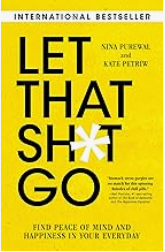 . A refreshing perspective on finding peace and happiness amidst the chaos of everyday life. The audiobook addresses common stressors, such as overwhelming to-do lists and financial worries, offering practical strategies to help listeners release negativity and cultivate mindfulness. Through relatable anecdotes and actionable advice, the authors empower listeners to prioritize their mental well-being and embrace a more balanced lifestyle.
. A refreshing perspective on finding peace and happiness amidst the chaos of everyday life. The audiobook addresses common stressors, such as overwhelming to-do lists and financial worries, offering practical strategies to help listeners release negativity and cultivate mindfulness. Through relatable anecdotes and actionable advice, the authors empower listeners to prioritize their mental well-being and embrace a more balanced lifestyle.
A quote from "Let That Shit Go" by Bruna Nessif emphasizes the importance of releasing negativity: "Unquestionably, letting go of all the shit that life throws at you is not a piece of cake, but it is important to let go in order to live in the moment."
5. Healing Your Emotional Self: A Powerful Program to Help You Raise Your Self-Esteem by Beverly Engel
Focuses on overcoming shame and building self-worth through effective therapy techniques.
The book introduces the concept of Mirror Therapy, which helps readers reject distorted self-images formed during childhood. Engel provides practical tools and exercises to quiet one's inner critic and develop a healthier sense of self-worth. A key quote from the book is: "Compassion is the essence of self-esteem. When you have compassion for yourself, you understand and accept yourself the way you are"
6. The Mountain Is You: Transforming Self-Sabotage into Self-Mastery by Brianna Wiest.
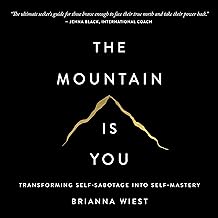 Explores the concept of self-sabotage and provides actionable steps for personal growth.
Explores the concept of self-sabotage and provides actionable steps for personal growth.
"The Mountain Is You" by Brianna Wiest is a transformative book that explores the concept of self-sabotage and offers strategies to overcome it. The author uses the metaphor of a mountain to represent the internal obstacles we face in our journey of personal growth and self-improvement. Through practical insights and thoughtful analysis, Wiest guides readers to confront their fears, embrace change, and cultivate self-mastery. A key quote from the book that encapsulates its message is: "Your mountain is not the block between you and the life you want to live. Facing it is also the only path to your freedom and becoming."
7. Anxiety Rx: A Revolutionary New Prescription for Anxiety Relief by Dr. Russell Kennedy 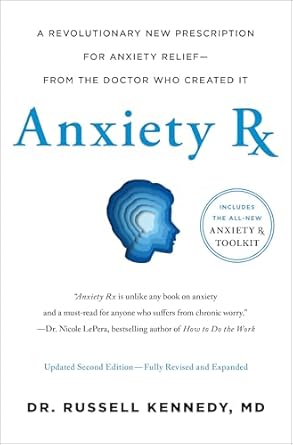 offers a unique perspective on treating anxiety by focusing on the body rather than just the mind. The book proposes that anxiety originates from physical sensations and stored trauma in the body, rather than solely from thoughts in the brain. Dr. Kennedy shares his personal experiences with anxiety and presents techniques to help readers calm their bodies and disconnect physical alarm signals from anxious thoughts.
offers a unique perspective on treating anxiety by focusing on the body rather than just the mind. The book proposes that anxiety originates from physical sensations and stored trauma in the body, rather than solely from thoughts in the brain. Dr. Kennedy shares his personal experiences with anxiety and presents techniques to help readers calm their bodies and disconnect physical alarm signals from anxious thoughts.
A key quote from the book is: "Anxiety starts in the body, where trauma is stored and physical and emotional perception begin."
8. The Subtle Art of Not Giving a F*ck by Mark Manson
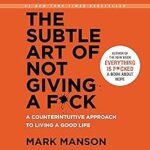 This audiobook challenges the conventional wisdom of positive thinking and offers a refreshingly honest perspective on life. It encourages listeners to embrace life's challenges and focus on what truly matters. The audiobook provides a counterintuitive approach to living a good life by accepting limitations and learning to cope with adversity.
This audiobook challenges the conventional wisdom of positive thinking and offers a refreshingly honest perspective on life. It encourages listeners to embrace life's challenges and focus on what truly matters. The audiobook provides a counterintuitive approach to living a good life by accepting limitations and learning to cope with adversity.
A notable quote from the book encapsulates its essence:“You and everyone you know are going to be dead soon. And in the short amount of time between here and there, you have a limited amount of fucks to give. Very few, in fact. And if you go around giving a fuck about everything and everyone without conscious thought or choice—well, then you’re going to get f*cked”
9. Atomic Habits: An Easy & Proven Way to Build Good Habits & Break Bad Ones by James Clear
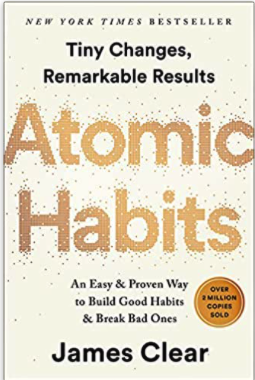 Offers a comprehensive framework for habit formation and personal improvement.
Offers a comprehensive framework for habit formation and personal improvement.
James Clear's "Atomic Habits" emphasizes the power of small, incremental changes in shaping our lives and behaviors. The book argues that focusing on systems rather than goals is key to long-term success and personal transformation. Clear provides practical strategies for building good habits and breaking bad ones, highlighting the compounding effect of consistent, tiny improvements over time.A relevant quote from the book is:"You do not rise to the level of your goals. You fall to the level of your systems."This quote encapsulates Clear's philosophy that sustainable change comes from developing robust systems and processes rather than simply setting ambitious goals.
10. How to Stop Feeling Like Sh*t: 14 Habits That Are Holding You Back from Happiness by Andrea Owen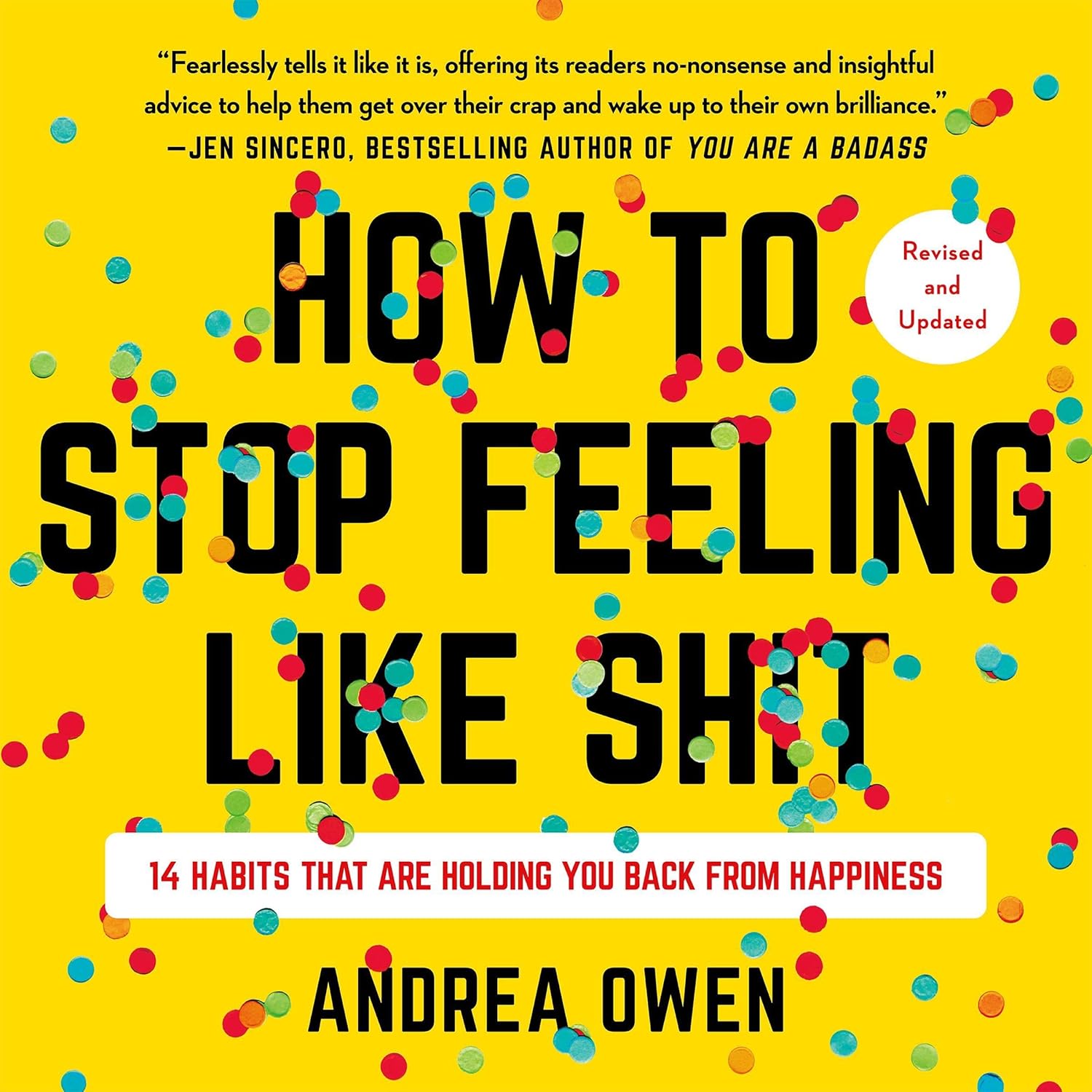
Provides insights into common habits that hinder happiness and how to overcome them.
"How to Stop Feeling Like Sh*t" by Andrea Owen offers a no-nonsense approach to addressing common self-destructive behaviors that hold women back from happiness. The book focuses on 14 specific habits, including perfectionism, people-pleasing, and catastrophizing, providing practical advice for overcoming each one. Owen combines personal anecdotes with actionable strategies, encouraging readers to confront their negative patterns and develop healthier mindsets. A key quote from the book that captures its essence is: "You're a f*cking miracle of being." This statement reflects Owen's direct style and her emphasis on recognizing one's inherent worth as a starting point for personal growth.
11. The Myth of Normal: Trauma, Illness, and Healing in a Toxic Culture by Gabor Maté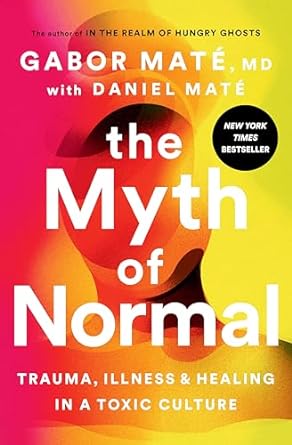 and his son Daniel Maté. The authors argue that what we consider "normal" in our culture is often detrimental to our well-being, contributing to chronic illnesses and mental health issues.
and his son Daniel Maté. The authors argue that what we consider "normal" in our culture is often detrimental to our well-being, contributing to chronic illnesses and mental health issues.
This idea encapsulates a key idea in Maté's book - that trauma is not defined by external events themselves, but rather by how those events impact a person internally. It shifts the focus from specific incidents to the lasting psychological and physiological effects within an individual.
12. Daring Greatly: How the Courage to Be Vulnerable Transforms the Way We Live, Love, Parent, and Lead by Brené Brown.
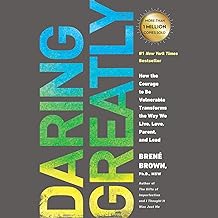 A thought-provoking exploration of vulnerability and its role in personal growth and relationships. Brown argues that embracing vulnerability, rather than shying away from it, is key to living a more authentic and fulfilling life. The book offers insights backed by Brown's research, providing readers with strategies to cultivate courage and resilience in various aspects of life, including parenting, leadership, and personal relationships.
A thought-provoking exploration of vulnerability and its role in personal growth and relationships. Brown argues that embracing vulnerability, rather than shying away from it, is key to living a more authentic and fulfilling life. The book offers insights backed by Brown's research, providing readers with strategies to cultivate courage and resilience in various aspects of life, including parenting, leadership, and personal relationships.
13. You Are a Badass: How to Stop Doubting Your Greatness and Start Living an Awesome Life by Jen Sincero.
 An engaging self-help book that combines humor with practical advice to empower readers to overcome self-doubt and take charge of their lives. Sincero's candid anecdotes and straightforward exercises encourage readers to identify and dismantle self-sabotaging beliefs, fostering a mindset geared toward success and self-love. While some may find the spiritual elements a bit excessive, the book remains a motivating read for those looking to make meaningful changes in their lives.
An engaging self-help book that combines humor with practical advice to empower readers to overcome self-doubt and take charge of their lives. Sincero's candid anecdotes and straightforward exercises encourage readers to identify and dismantle self-sabotaging beliefs, fostering a mindset geared toward success and self-love. While some may find the spiritual elements a bit excessive, the book remains a motivating read for those looking to make meaningful changes in their lives.
14. The Gifts of Imperfection: Let Go of Who You Think You’re Supposed to Be and Embrace Who You Are by Brené Brown.  Her book emphasizes the importance of embracing our flaws and vulnerabilities as essential components of living authentically. She encourages readers to cultivate self-compassion and recognize that true worthiness is inherent, regardless of imperfections. Brown asserts that "fitting in is about assessing a situation and becoming who you need to be to be accepted. Belonging, on the other hand, doesn’t require us to change who we are; it requires us to be who we are."
Her book emphasizes the importance of embracing our flaws and vulnerabilities as essential components of living authentically. She encourages readers to cultivate self-compassion and recognize that true worthiness is inherent, regardless of imperfections. Brown asserts that "fitting in is about assessing a situation and becoming who you need to be to be accepted. Belonging, on the other hand, doesn’t require us to change who we are; it requires us to be who we are."
15. How to Stop People-Pleasing** by Wind Goodfriend.
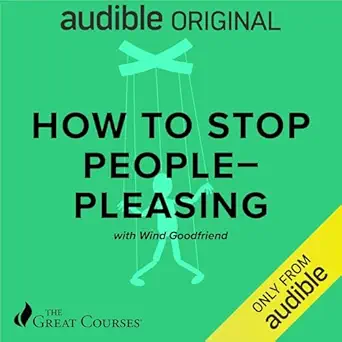 Dr. Wind Goodfriend's book, How to Stop People-Pleasing, explores the psychological drivers behind the tendency to prioritize others' needs over one's own well-being. It emphasizes the importance of self-awareness and setting healthy boundaries to reclaim personal agency. Goodfriend encourages readers to reflect on their motivations and desires, fostering a deeper understanding of their true selves.A notable quote from the book is: "The first step in breaking free from people-pleasing is recognizing that your worth is not determined by others' approval."
Dr. Wind Goodfriend's book, How to Stop People-Pleasing, explores the psychological drivers behind the tendency to prioritize others' needs over one's own well-being. It emphasizes the importance of self-awareness and setting healthy boundaries to reclaim personal agency. Goodfriend encourages readers to reflect on their motivations and desires, fostering a deeper understanding of their true selves.A notable quote from the book is: "The first step in breaking free from people-pleasing is recognizing that your worth is not determined by others' approval."
16. The Creative Act: A Way of Being by Rick Rubin
 Explores creativity as a fundamental aspect of life, encouraging listeners to embrace their artistic side. "The Creative Act: A Way of Being" is a profound exploration of creativity as a fundamental aspect of human existence, rather than just a skill for artists. The book offers 78 philosophical musings on the nature of art and creativity, emphasizing that living as an artist is a practice that extends beyond traditional artistic pursuits. Rubin's insights encourage readers to embrace their unique perspectives, break conventional rules, and view creativity as an essential part of a fulfilling life, making this book valuable for anyone seeking to cultivate their creative potential.
Explores creativity as a fundamental aspect of life, encouraging listeners to embrace their artistic side. "The Creative Act: A Way of Being" is a profound exploration of creativity as a fundamental aspect of human existence, rather than just a skill for artists. The book offers 78 philosophical musings on the nature of art and creativity, emphasizing that living as an artist is a practice that extends beyond traditional artistic pursuits. Rubin's insights encourage readers to embrace their unique perspectives, break conventional rules, and view creativity as an essential part of a fulfilling life, making this book valuable for anyone seeking to cultivate their creative potential.
A significant quote from "The Creative Act: A Way of Being" by Rick Rubin is: "All that matters is that you are making something you love, to the best of your ability, here and now."
Click here for an audibook subscription.
17. Don't Believe Everything You Think: Why Your Thinking Is the Beginning & End of Suffering.
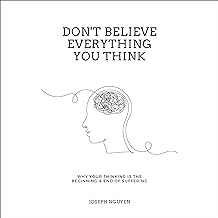 Joseph Nguyen's *Don't Believe Everything You Think: Why Your Thinking Is the Beginning & End of Suffering* explores the profound impact of thought on human suffering. The book posits that our thoughts are the root cause of all psychological and emotional distress, suggesting that by altering our relationship with these thoughts, we can transform our experiences and emotions. It emphasizes the importance of recognizing that everything is neutral until we assign meaning to it through our perceptions.
Joseph Nguyen's *Don't Believe Everything You Think: Why Your Thinking Is the Beginning & End of Suffering* explores the profound impact of thought on human suffering. The book posits that our thoughts are the root cause of all psychological and emotional distress, suggesting that by altering our relationship with these thoughts, we can transform our experiences and emotions. It emphasizes the importance of recognizing that everything is neutral until we assign meaning to it through our perceptions.
A notable quote from the book is:
"The root cause of our suffering is our own thinking."
18. The Body Keeps the Score: Brain, Mind, and Body in the Healing of Trauma
by Bessel van der Kolk M.D., Sean Pratt, et al.
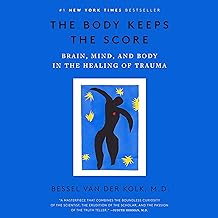 This book explores the profound impact of trauma on the mind, brain, and body and how trauma is not just a past event, but an ongoing imprint that affects how individuals manage their present experiences. Van der Kolk highlights the importance of addressing trauma through a holistic approach that involves both the mind and body.
This book explores the profound impact of trauma on the mind, brain, and body and how trauma is not just a past event, but an ongoing imprint that affects how individuals manage their present experiences. Van der Kolk highlights the importance of addressing trauma through a holistic approach that involves both the mind and body.
19. The Hidden Power of the Five Hearts by Kimberly Snyder
 Explores emotional well-being through the lens of heart-brain communication.
Explores emotional well-being through the lens of heart-brain communication.
20. Man's Search for Meaning by Viktor E. Frankl
 Discusses the rise of anxiety in modern society and offers coping strategies.
Discusses the rise of anxiety in modern society and offers coping strategies.
Viktor E. Frankl's 'Man's Search for Meaning' reveals the profound quest for purpose amid suffering, particularly through his experiences in Nazi concentration camps. He emphasizes that meaning can be found in three avenues: through work, love, and suffering, suggesting that even in the most dire circumstances, individuals can find significance in their struggles. Frankl asserts that "everything can be taken from a man but one thing: the last of the human freedoms—to choose one’s attitude in any given set of circumstances".
21. Mindset: The New Psychology of Success by Carol S. Dweck
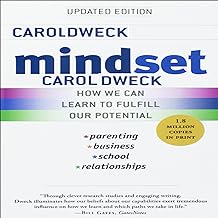 In "Mindset: The New Psychology of Success," Carol S. Dweck explores the transformative power of adopting a growth mindset, emphasizing that one's abilities can be developed through dedication and hard work. She contrasts this with a fixed mindset, where individuals believe their qualities are static and unchangeable, leading to a fear of failure and avoidance of challenges. Dweck asserts that embracing challenges and viewing effort as a pathway to mastery fosters resilience and a love for learning.
In "Mindset: The New Psychology of Success," Carol S. Dweck explores the transformative power of adopting a growth mindset, emphasizing that one's abilities can be developed through dedication and hard work. She contrasts this with a fixed mindset, where individuals believe their qualities are static and unchangeable, leading to a fear of failure and avoidance of challenges. Dweck asserts that embracing challenges and viewing effort as a pathway to mastery fosters resilience and a love for learning.
"The passion for stretching yourself and sticking to it, even (or especially) when it’s not going well, is the hallmark of the growth mindset."
22. The 5 AM Club: Own Your Morning, Elevate Your Life by Robin Sharma
 Robin Sharma's *The 5 AM Club: Own Your Morning, Elevate Your Life* emphasizes the transformative power of waking up early. The book presents a narrative in which a billionaire mentors two struggling individuals, teaching them that the first hour of the day is crucial for personal growth and productivity. Through a structured morning routine, Sharma argues that individuals can unlock their potential and achieve extraordinary results.
Robin Sharma's *The 5 AM Club: Own Your Morning, Elevate Your Life* emphasizes the transformative power of waking up early. The book presents a narrative in which a billionaire mentors two struggling individuals, teaching them that the first hour of the day is crucial for personal growth and productivity. Through a structured morning routine, Sharma argues that individuals can unlock their potential and achieve extraordinary results.Click here to get an audiobook subscription from Amazon!
Unleash Your Inner Leader: 12 Habits of Highly Influential People
Rewire Your Brain for Happiness: 7 Proven Techniques
The Science of Habit Formation: 9 Steps to Build Lasting Change
Overcome Imposter Syndrome: 7 Strategies for Authentic Confidence
Unlock Your Intuition: 4 Exercises to Develop Your Sixth Sense
Boost Your Focus: 6 Scientifically-Backed Concentration Techniques
The Power of Positive Self-Talk: Transform Your Life in 30 Days
Mastering Mindfulness: A Beginner’s Guide to Present Moment Awareness
Rewire Your Brain for Success: The Neuroscience of Goal Achievement
Unlock Your Inner Genius: 8 Habits of Highly Innovative People

Can a Breakup Lead to Depression?
It is not the strongest of the species that survives, nor the most intelligent that survives. It is the one that is most adaptive to change - Charles Darwin.
A breakup can cause stress. Stress can lead to depression.
Here's how:
First, the role of stress in the development, expression, and exacerbation of depression is well established. (ref 1-4).
1. (Stressful Life Events, Chronic Difficulties, and the Symptoms of Clinical Depression -https://www.ncbi.nlm.nih.gov/pmc... )
2. (Major Life Events and Major Chronic Difficulties Are Differentially Associated With History of Major Depressive Episodes
https://www.ncbi.nlm.nih.gov/pmc... )
3. (Stressful life events, genetic liability, and onset of an episode of major depression in women. Stressful life events, genetic liability, and onset of an episode of major depression in women.)
4. (Stress and depression. Stress and depression. )
Major depression is one of the most common and one of the most disabling psychological conditions. The impairment resulting from depression is severe, not only because of the pervasive impact of an episode of the disorder on the afflicted individual’s life, but also because of the high likelihood that depression will recur, often repeatedly, over the course of their lives. So when a breakup happens to a person, if they aren’t somewhat prepared and resilient, that breakup can be a substantial pivot point in their lives that might adversely affect them for years. And if that relationship dissolution put them into a tailspin, how are they going to respond when struck by the additional slings and arrows of life? e.g. death of their parents.
Stress also has a long term negative effect on circuits in the brain responsible for regulating emotions. (ref 5-7)
5. In stressful situations such as military training, US cadets report decreased ratings of pleasure in response to positive provocations
(The effect of stress on hedonic capacity.)
6. Women under acute stress produced by threat of shock show blunted reward responsiveness. 
(Acute stress reduces reward responsiveness: implications for depression. )
7. Individuals reporting higher levels of stress in the recent past show reduced reward learning (https://www.ncbi.nlm.nih.gov/pmc... )
People who have stress over time can end up having their emotion regulation circuitry compromised causing it to take longer to recover from stressful events and get back to a normal baseline. (Prolonged Marital Stress is Associated with Short-Lived Responses to Positive Stimuli https://www.ncbi.nlm.nih.gov/pmc...) That study had also shown that subjects were quick to feel negative emotions after the conditioned stimulus was presented and would stay in that stress state for longer. It’s like they’ve trained themselves to prefer emotional pain. They spend more time there so perhaps it seems most comfortable. And it’s like they dislike pleasure because when looking at pleasant stimuli, it would take them longer to make sense of positive images and when they did, those positive feelings were brief. Richie Davidson, the principal neuroscientist for that paper wrote that the untrained people are slow to recover and that they perseverate. Too much time thinking about the ex and feeling the stress of it repeatedly is won't make things better.
So recovering successfully after a breakup takes some skills. Not just for being able to bounce back, but skills to prevent sinking into the abyss due to the stress linkage to depression and the compromised emotion regulation circuitry.
Another contribution to depression the stress of a breakup can deliver is weakened reward circuitry. Fun becomes … funless.
(Increased Perceived Stress is Associated with Blunted Hedonic Capacity: Potential Implications for Depression Research
https://www.ncbi.nlm.nih.gov/pmc...)
This is why marital stress is associated with a higher incidence of psychiatric disorders, in particular major depression. A person can’t move forward after a breakup if the tools for moving forward are compromised.
Depending on a person's background and history with adversity, a breakup might be one of the worst experiences in life and they haven’t the history or support to get over it.
People that don’t move forward after a breakup are usually clinging to a model of the world that no longer exists. They might believe the ex is ‘the one’ and that their future is over without the ex. Some would rather die than change their beliefs. They focus on the past so much it becomes a habitually practiced skill. They get really good at feeling bad. That just puts them into a nosedive that can make escaping quite difficult, especially if they keep replaying old memories with strong emotions. “I cant get them back. They were the one. I miss him/her so much. I can’t live without them. I have no future without them. I think about them everyday". That kind of thinking is not going to cultivate resilience.
Feel bad long enough and the ability to bounce back gets harder and harder because this thinking becomes more stable and automatized. They start to believe their own lies and cognitive distortions. 'I’m worthless, I’m garbage, nobody will love me like that again, theres nothing to live for, nothing is enjoyable, I’ve lost everything, the light has gone out in my life.’
With this sabotage, they begin to feel worthless and stop doing anything solution based. e.g. researching problems instead of creative ways to make the best of situations.
Now, if there are no new experiences, the hippocampus begins to shrink because there are no new memory formations. Hippocampus is attributed with the consolidation of information from short term memory to long-term memory. What happens with a hippocampus that decreases in size due to a lack of new experiences? For this answer, a quote from Robert Sapolsky... "This structure plays a critical role in learning and memory, and the magnitude of the hippocampal volume loss (nearly 20% in some reports; see bullets. 8, 9, 10) helps explain some well-documented cognitive deficits that accompany major depression.'
8. Hippocampal atrophy in recurrent major depression.
10. Hippocampal volume reduction in major depression
Linda Graham writes ’Unless new experiences cause a rewiring of the old circuits, the patterns of coping we learned (even if they aren’t working) become our default responses to life’s set backs. As the twig is bent, so grows the tree.’ - Bouncing Back- Rewiring Your Brain for Maximum Resilience and Well Being. by Linda Graham, MFT

With all the continual stress and strain and focus on the past, their brain is helping them go deeper down a rough, painful, slow, sad road. More intrusive rumination, guilt, anger, sadness, shame, disappointment. It’s a habit. The ex is like a drug to the brain, the brain wants a hit of excitement so it goes to memories linked to pleasure, they start thinking of the past, pleasure is linked to the ex, that memory is brought forth and sometimes re-traumatize themselves by reopening an old unhealed unresolved wound and on it goes.
In Carol Dwecks book, ‘Mindset: Psychology of Success’, she writes about the difference in thinking between winners and losers. Winners have flexible mindsets. Losers have rigid, inflexible thinking.

What would happen to the car manufacturers or Apple if they stopped innovating? What happened to Blockbuster when it knew Netflix was coming down the line? Blockbuster held on to their same business model hoping patrons would still come in on a Friday night and pick up a VHS movie like always. Times changed, Blockbuster didn’t. Now they’re an example of how mental rigidity is a VIP pass to extinction. Ok almost extinction, there’s a blockbuster or two still around. In a nutshell, evolve or die. But it’s difficult if the evolve tools are compromised.
And that’s some of what’ can lead to depression with people that don’t get over a breakup. Although some folks might have been off center before the relationship started and then the breakup might have been the tipping point that called out their emotional style. A person might not know they’re bad at getting over stuff until it happens.
The brain rewires itself in response to experience, so if bad experiences and thoughts of the past is the main food for thought, that’s going to result in an impoverished brain and its going to want stimulation. Time to bring in the internet, alcohol, drugs or gambling, maybe become destructive & nihilistic to feel control over something in life. People with a tough time moving on post-breakup are ones that haven’t got any big future plans, just a past that they keep replaying which eats their future. It’s not their fault. It’s their brain. Without supportive themes and right attention to get back on track, they can suffer a gradual burn that slowly turns hope into ashes.
Then there are some that get PTSD after a breakup due to ending a relationship with a violent narcissist. This is going to create nightmares and flashbacks, the typical symptoms of PTSD.
And this is why neuroplasticity is a double edged sword. Experience shapes the brain and can change the brains structure and functioning. Which means the downward spiral can also become an upward spiral out of depression after a breakup. However, a change doesn’t always mean it’s for the better. You can use your mind to change your brain…for the better or the worse.
Fortunately, there are mental training strategies for engaging self-directed neuroplasticity to increase resilience and bounce back after a breakup. Also, well being is a skill that can be cultivated so there is lots of hope and escape routes that enable people to bounce back after a breakup and in some instances, achieve their own form of post-traumatic growth.
Most important is recognizing the prodromal symptoms of depression and doing something about it like taking lithium or doing mental training strategies to rewire the brain back to a more functional state.
‘Any new experience rewires the brain in some way. When we want to direct that rewiring - for example, when we want to rewire specifically for resilience-it’s necessary to carefully choose the new experiences that will help create that new neural structure and rewire old pathways effectively, efficiently and safely. We can do so by using self-directed neuroplasticity by directing focused attention on specific new experiences or on old patterns that we want to rewire.’ - Bouncing Back- Rewiring Your Brain for Maximum Resilience and Well Being. by Linda Graham, MFT
Another resource to consider to get over a breakup is 'How to Get Over Your Ex in 5 Hours'. This book focuses on people that had a breakup and then became bigger versions of themselves such as Tina Turner and J.K. Rowling. it also has a chapter on memory reconsolidation so you can discover how to rewrite memories of your ex. Additionally is a chapter about post-traumatic growth which can be inspirational lto know that this phenomena can be applied to your own life.
If you are interested in talking about mental health and are in the U.S. please call: 855-978-2988
Exploring the Power of Hypnosis in Healing a Broken Heart
Breaking up...
How to Stop Negative Self-Talk: Techniques and Strategies for a Positive Mindset
Negative...
How to Get Over a Breakup with Hypnosis
Breaking up...
How to Develop an Anti-Fragile Mindset
In today's...
Can Meditation Heal the Body and Improve Genes?
Meditation...
Lady Gaga, Meditation and the Dalai Lama
Lady Gaga...
27 Ideas for Your Vision Board
What is a...
David Goggins’ Mindset: 10 Psychological Techniques for Pushing Oneself Beyond Limits
David...
How a Breakup Can Effect Mental Health and How Hypnosis Can Help
The breakup...

“The Art of Stealth: How Viet Cong Sappers Cultivated a Mindset of Invisibility”
A Viet Cong sapper was a highly trained and elite commando unit that operated during the Vietnam War.
Role and Tactics
Organization and Structure
Equipment and Weapons
Training and Selection
Notable Attacks
How Sapper Units Were Trained and Selected, Particularly During the Vietnam War Era:
Vietnam's Secret Commando Training Program: Exporting Revolution During the Cold War
The Vietnamese Sapper Forces
The Training Program Takes Shape
Foreign Forces Trained by Vietnamese Sappers
Revolutionary/Guerrilla Groups:
Training Curriculum
Impact on Global Conflicts
El Salvador
Nicaragua
Colombia
Chile
Members of the Movement of the Revolutionary Left (MIR) received training from Vietnamese sappers as they fought against the dictatorship of Augusto Pinochet. While ultimately unsuccessful in overthrowing Pinochet, MIR's urban guerrilla tactics posed a persistent threat to the regime throughout the 1980s.






























